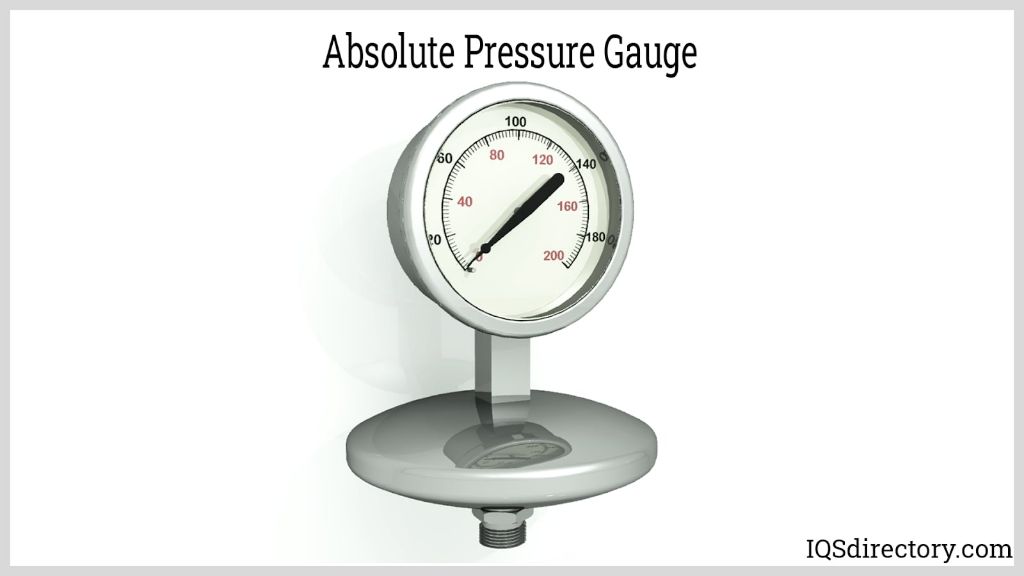What Are The 5 Instruments Of Measurement?
Measurements are an essential part of science and engineering. From determining the properties of matter to designing complex structures, measurements provide quantitative information that allows for experimentation, analysis, and innovation. As noted by Stanford Encyclopedia of Philosophy, “Measurement is often considered a hallmark of the scientific enterprise and a privileged source of knowledge relative to qualitative modes of investigation.”
Measurements allow scientists and engineers to make objective observations, test hypotheses, and draw conclusions based on empirical data rather than speculation or intuition alone. Precise and accurate measurements are crucial for describing, explaining, and predicting natural phenomena. Measurements also enable technological advances by providing the data needed for designing products and processes. In short, progress in science and engineering relies heavily on the ability to make reliable measurements.
Length
Length is a measure of distance and is a fundamental unit of measurement in both the imperial and metric systems. Some of the most common units of length include:
- Meter – The standard unit of length in the metric system. One meter equals approximately 1.09 yards.
- Kilometer – Equal to 1,000 meters. Kilometers are commonly used to measure longer distances.
- Centimeter – Equal to 1/100th of a meter. Centimeters are commonly used to measure shorter distances.
- Millimeter – Equal to 1/1,000th of a meter. Millimeters are used to measure very short distances.
- Inch – The most widely used unit of length in the US customary system. One inch equals exactly 2.54 centimeters.
- Foot – Equal to 12 inches. Feet are commonly used to measure height and shorter distances.
- Yard – Equal to 3 feet or 36 inches. Yards are used to measure medium-range distances.
- Mile – Equal to 1,760 yards or 5,280 feet. Miles measure longer distances such as the distance between cities.
Understanding and being able to convert between different units of length is an essential math skill. Whether measuring for a woodworking project, baking a cake, or mapping out a running route, selecting the right unit ensures accuracy.
Mass
Mass refers to the amount of matter in an object (source). The most commonly used units for measuring mass are grams and kilograms. The gram (g) is the standard unit of mass in the metric system. A kilogram (kg) is equal to 1000 grams. Some other common units include:
- Milligram (mg) – 1/1000 of a gram
- Pound (lb) – Approximately equal to 453.592 grams
- Ounce (oz) – Approximately equal to 28.3495 grams
The Imperial or US Customary system uses pounds and ounces to measure mass, while the metric system uses grams and kilograms. The Metric System provides a coherent base-10 system for measurement across units, while the Imperial system uses more arbitrary conversions between units (source). Most scientists today use the metric system for precision and ease of conversion between units.
Time
Time is one of the most fundamentally important measurements. According to the National Standards Authority of Ireland, “The measurement of time of day can be traced back to the Egyptians and Babylonians, who used sundials to approximate the time of day and the movement of the sun across the sky.” (The Importance of Time Measurement | NSAI). Without standardized time measurement, scheduling and coordination would be extremely difficult.
Modern time measurement is based on precise atomic clocks that count oscillations of atoms. Time is measured in units like seconds, minutes, hours, days, weeks and years. Seconds are the base unit, defined as 9,192,631,770 oscillations of a cesium atom. Minutes contain 60 seconds, hours contain 60 minutes, days contain 24 hours, and so on. This precise standardization of time allows global synchronization and scheduling down to the second.
Some key developments in time measurement include ancient sundials, early mechanical clocks in Europe during the Middle Ages, pendulum clocks in the 17th century, and finally atomic clocks in the 20th century. As Cranfield University notes, “Throughout time all clocks have one thing in common – they mark the passage of time by counting regular oscillations” (The importance of measuring time). Today’s atomic clocks represent the most advanced and precise timekeeping devices yet invented.
Temperature
Temperature measurement has a long history going back to the early 18th century when Gabriel Fahrenheit invented the mercury thermometer and Fahrenheit scale in 1714 (https://en.wikipedia.org/wiki/Temperature_measurement). The Fahrenheit scale set the freezing point of water at 32°F and the boiling point at 212°F.
The Celsius scale was devised in 1742 by Swedish astronomer Anders Celsius, who set the freezing point of water at 0°C and the boiling point at 100°C. This scale was inverted in 1745 by Carl Linnaeus who placed the freezing point at 100°C and boiling point at 0°C. Later in 1848, the scale was flipped back to the modern system we know today by William Thompson, 1st Baron Kelvin (https://spark.iop.org/brief-history-temperature).
The Kelvin scale is the standard unit of temperature in the International System of Units (SI). Unlike Celsius and Fahrenheit which use relative temperature scales, the Kelvin scale uses an absolute scale starting from absolute zero. 0 K equals -273.15°C and water freezes at 273.15 K. The size of one kelvin step is the same as one degree Celsius (https://en.wikipedia.org/wiki/Timeline_of_temperature_and_pressure_measurement_technology).
Electricity
Electricity has several basic units that are important to understand (source). The volt is the unit used to measure electrical potential difference and electromotive force. The ampere (or amp) measures electric current. Ohms measure electrical resistance and impedance. Finally, the watt measures electrical power (source).
The volt, ampere, and ohm are the three base units of electricity in the International System of Units (SI). The watt is derived from multiplying amps and volts together. Understanding these basic electrical units is essential for working with electrical circuits and devices.
Luminosity
Luminosity refers to the measurement of light emitted from a source. There are several key units used to measure luminosity:
Lumens (lm): Lumens measure the total amount of visible light emitted from a source. For example, a 100-watt incandescent light bulb emits about 1,600 lumens.
Lux (lx): Lux measures the illumination provided by a light source. One lux is equal to one lumen per square meter. For example, an office environment is usually lit to around 300-500 lux.
Candela (cd): The candela measures the intensity of a light source in a particular direction. It is used to quantify beam candlepower of lamps and LEDs. A common candle emits about 1 candela.
Luminosity can be measured using photometers and lux meters, which capture and quantify visible light. These measurements are important for lighting design, safety, photography, and other fields. Proper luminosity ensures spaces are illuminated appropriately for their intended use.
Sources:
https://www.lumitex.com/blog/light-measurement
https://byjus.com/physics/unit-of-light/
Pressure

Pressure is defined as force per unit area and is used to measure the amount of force exerted on a surface. The standard unit of pressure is the pascal (Pa), which equals one newton per square meter (N/m2). The pascal was adopted as the official unit of pressure by the International System of Units (SI) in 1971 and was named after French philosopher and mathematician Blaise Pascal.
Some other common units of pressure include:
- Bar – 1 bar = 100,000 Pa
- Pounds per square inch (psi) – A non-SI unit commonly used in countries like the US
- Millimeters of mercury (mmHg) – Used to measure blood pressure
There are many different devices used to measure pressure, including manometers, pressure gauges, and piezometers. These instruments contain sensors that detect the force exerted and convert it into an electrical signal to determine the pressure value (Sources: Beamex, Control and Instrumentation).
Angle
One of the common instruments used for measurement is an angle. An angle is formed when two lines intersect at a shared endpoint or vertex. Angles are commonly measured in units such as degrees and radians.
The most widely used unit for angle measurement is the degree (°). A full circle contains 360 degrees. Degrees can be further divided into minutes (1° = 60′) and seconds (1′ = 60″). Some key facts about degree measurement:
- Right angle = 90 degrees
- Straight angle = 180 degrees
- Reflex angle = Greater than 180 degrees but less than 360 degrees
Another common unit is the radian. A radian is defined as the angle subtended at the center of a circle by an arc equal in length to the radius of the circle. There are 2π radians in a full circle. Radians are commonly used in mathematics and physics as they simplify formulas involving trigonometric functions.
Both degrees and radians are valid units for angle measurement. The choice depends on the context and application. Degrees are more intuitive for everyday use, while radians are preferred in advanced mathematics and sciences. Proper conversion between the two units is important.
Conclusion
In summary, the five key instruments of measurement are:
- Length – Standard units such as meters, centimeters, and millimeters are used to measure length.
- Mass – The kilogram is the standard unit used to measure mass in the metric system.
- Time – Seconds, minutes, hours, days, weeks and years are standard units for measuring time.
- Temperature – Degrees Celsius, Fahrenheit, and Kelvin are commonly used units for temperature measurement.
- Electricity – Volts, amps, and ohms are standard units for measuring electricity.
Having standardized units of measurement allows for consistency in science, engineering, commerce and daily life. It enables effective communication and reduces errors. While countries may use different measurement systems, international standards help unite all measurements across the globe.





